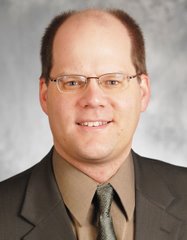Here's a column I wrote to the community newspapers on health care. I hope that you will share your comments on health care with me at rep.paul.gardner@house.mn.
HEALTH CARE MUST BE MORE AFFORDABLE AND ACCESSIBLE
The 2008 session of the state legislature will include a hefty discussion about health care access and costs.
Health insurance costs continue to rise dramatically. In the months before the next session, my colleagues in the House and Senate are discussing several reforms that could reverse some troubling trends. I hope that constituents will share their ideas and opinions with me before the session starts on February 12th.
The trends will not surprise you. Minnesota currently has the highest percentage of people uninsured since 1998, including over 100,000 children. And these are not just people making minimum wage. The share of Minnesotans with employment-based health insurance was just 65.7% in 2006, a new all-time low. Since 2000, private health insurance premiums have risen by an average of 10% per year, outpacing yearly income increases by over three times. This inflation reduces the ability of employers to hire more people, and when employers do not provide health coverage, workers are left trying to find coverage on their own.
Cost containment needs to be a priority. The state legislature made positive strides this year and is continuing to look for practical solutions that will help limit health care costs, while maintaining the high quality of care.
Along with insuring over 30,000
Minnesota kids who were previously not covered, we enacted legislation creating a more cost-effective health care system. In December, a new health care payment reform plan will be initiated that rewards cost-effective primary and preventive care and discourages overuse of expensive and many times unnecessary procedures.
Minnesota also became only the 2
nd state in the country to adopt uniform billing practices. Combined with electronic medical records (which need to have necessary data protections), this will lower administrative costs.
In June, a bipartisan coalition of legislators began studying
Minnesota's health care system, focusing on cost-containment and affordability. This Health Care Access Commission, comprised of both Republican and Democratic State Representatives and Senators, will release their policy recommendations this January.
The commission plans to offer proposals that correct redundancy and inefficiencies in health care payments, creating a lower-cost reimbursement structure.
Their recommendations will also focus on the need to reduce expensive health care services through preventative measures and early treatment for chronic conditions like obesity and diabetes.
Challenges will still remain. Many uninsured Minnesotans can pay for health coverage but insurance companies may choose not cover them. Reimbursement rates for Minnesota Care, like Medicare, are usually lower than normal market rates so doctors and clinics may limit the number of patients accepted under these programs if we expand them on a much larger scale.
I very much would like to hear your opinions, questions, and concerns about how health care costs and access issues are affecting you, and what ideas you have. Please e-mail me at Rep.Paul.Gardner@house.mn, write me at the Capitol, or call my office at 651-296-2907. Also check out my blog at http://www.paulgardner53a.blogspot.com for more information on my other legislative activities.
